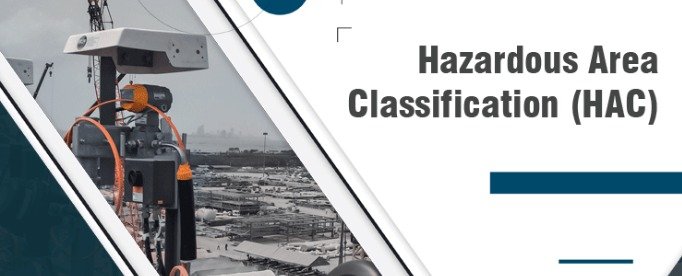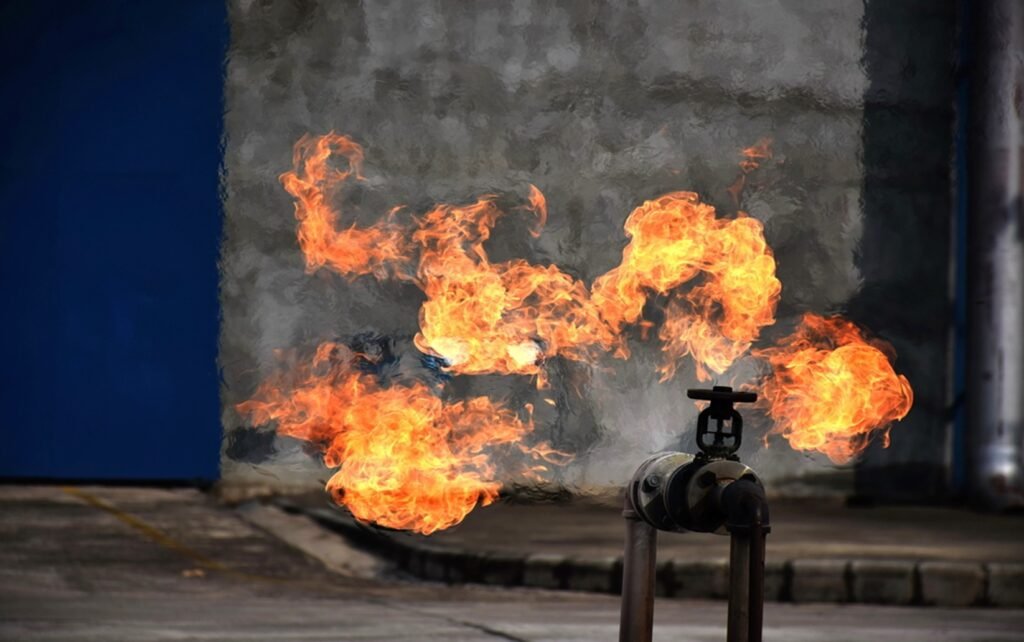Q1. What is the Objective of HAC?
A1. The objective of HAC is as follows:
The purpose of the Hazardous Area Classification study is to determine the extent of the hazardous areas around equipment handling or storing flammable fluids, combustible fluids and combustible dusts, both liquid and vapors in terms of Zone 0/20, Zone 1/21, Zone 2/22
The aim of hazardous area classification is to avoid ignition of those releases that may occur from time to time in the operation of facilities handling flammable liquids and vapors. The approach is to reduce to an acceptable minimum level the probability of coincidence of a flammable atmosphere and an electrical or other source of ignition occurring. In Hazardous Area Classification the extent of the hazardous areas around equipment handling or storing flammable fluids, both liquid and vapors is determined in terms of Zone 0, Zone 1, and Zone 2. The hazardous area classification around the equipment handling flammable/explosive dust is determined in terms of Zone 20, Zone 21, and Zone 22.

Q2. What is the Scope of HAC?
A2. The Scope of HAC is as follows: –
The Hazardous area classification is carried out as per:
- Classification of the Hazardous area for explosive dust is carried out as per IEC 60079-10-2
- Classification of the Hazardous area for flammable liquids/ gases/ vapors is carried out as per IEC 60079-10-1
Q3. What reference is commonly used for HAC Methodology?
A3. The reference used for HAC study is as follows:
- Draft Version of EI15 Edition 4– Model Code of Safe Practice – Area Classification Code for Installations Handling Flammable Fluids. Energy Institute 2015. 3.
- EI15 Edition 3– Model Code of Safe Practice – Area Classification Code for Installations Handling Flammable Fluids. Energy Institute 2005.
- IEC 60079-10-1 Explosive atmospheres Part 10-1: Classification of areas – Explosive gas atmospheres
- IEC 60079-10-2 Explosive atmospheres Part 10-2: Classification of areas – Explosive dust atmospheres
- Any other National and International Guideline Recommended by Client.
Q4. What is the order of precedence for HAC Study guideline?
A4. The order of precedence for HAC study is as follows:
- IEC 60079-10-1 Explosive atmospheres Part 10-1: Classification of areas – Explosive gas atmospheres
- IEC 60079-10-2 Explosive atmospheres Part 10-2: Classification of areas – Explosive dust atmospheres
- Draft Version of EI15 Edition 4– Model Code of Safe Practice – Area Classification Code for Installations Handling Flammable Fluids. Energy Institute 2015. 3.
- EI15 Edition 3– Model Code of Safe Practice – Area Classification Code for Installations Handling Flammable Fluids. Energy Institute 2005.
- National & International reference books.
Q5. What is the methodology for HAC Study?
A5. The methodology for HAC Study is as follows:
- Data collection
- MSDS Sheet Preparation
- Process step and Representative Chemical sheet preparation
- Client Approval for HAC Schedule preparation
- HAC Schedule
- Draft Report
- Client Approval for HAC marking
- HAC marking
- Comments incorporation along with CRS (Comment Resolution Sheet)
- Final Report

Q6. What are the Different Types of Grade of Release?
A6. Three types of grades of release are as follows
- Continuous Grade release (C): A release that is continuous or nearly so, or that occurs frequently and for short periods.
- Primary Grade release (P): A release that is likely to occur periodically or occasionally in normal operation, that is, a release which, in operative procedures, is anticipated to occur.
- Secondary grade release (S): A release that is unlikely to occur in normal operation and, in any event, will do so only infrequently and for short periods, that is, a release which, in operating procedures, is not anticipated to occur.
Q7. What are the Different Types of Class of the Fluid?
A7. Three types of class of fluid are as follows:
Flammable Liquids vary in volatility and have a flash point below 930C and a Vapor Pressure not exceeding 2.81 kg/cm2 at 37.80C. These are divided into three classes, as follows,
- Class A: Flammable liquids having flash point below 23° C
- Class B: Flammable liquids having flash point 23° C and above but below 65°C
- Class C: Flammable liquids having flash point 65° C and above but below 93°C
Q8. What are the steps for HAC Study
A8. The steps for HAC Study are as follows:
- The procedure of HAC involves following steps:
- Identification of the Point Source or Source of Release
- Determine the Grade of Release
- Determine the Class of the Fluid
- Determine the Ventilation Requirements
- Establish Zone Classification
- Determine Hazard Radii
- Determine Hazardous Area
- To enable selection of electrical equipment’s appropriate to the zone classification, the apparatus sub group and temperature class is then determined based on the flammable substances that can be released.

Q9. According to IEC guidelines in hazardous area classification, what are the different types of degree of dilution recognized?
A9. Following degree of dilution is recognized in HAC Study as per IEC Guidelines.
The following three degrees of dilution are recognized:
- High dilution (H) : The concentration near the source of release reduces quickly and there will be virtually no persistence after the release has stopped.
- Medium dilution (M) : The concentration is controlled resulting in a stable zone boundary, whilst the release is in progress and the explosive gas atmosphere does not persist unduly after the release has stopped.
- Low dilution (L) : There is significant concentration whilst release is in progress and/or significant persistence of a flammable atmosphere after the release has stopped.
Q10. What are the different zones defined by IEC for hazardous areas, and how are they classified?
A10. Different Zones defined by IEC for hazardous areas are follows:
IEC defines zones based on the frequency and duration of the presence of hazardous substances. Zones include Zone 0 (continuous presence), Zone 1 (intermittent presence), and Zone 2 (occasional presence) for gases and vapors, and Zone 20 (continuous presence), Zone 21 (intermittent presence), and Zone 22 (occasional presence) for combustible dusts.
- Zone 0 Areas: An area in which an explosive gas atmosphere is present continuously or is present for long periods. Examples are vapor space above closed process vessels, storage tanks or closed containers, areas containing open tanks of volatile, flammable liquid.
- Zone 1 Areas: An area in which an explosive gas atmosphere is likely to occur in normal operation
- Zone 2 Areas: An area in which an explosive gas atmosphere is not likely to occur in normal operation and if it does occur it will exist for a short period only
- Zone 20: A place in which an explosive atmosphere, in the form of a cloud of combustible dust in air, is present continuously, or for long periods or frequently for short periods
- Zone 21: A place in which an explosive atmosphere, in the form of a cloud of combustible dust in air, is likely to occur occasionally in normal operation.
- Zone 22: A place in which an explosive atmosphere, in the form of a cloud of combustible dust in air, is not likely to occur in normal operation but, if it does occur, will persist for a short period only.

Q11. What are the documents required for the HAC Study?
A11. The documents required for the HAC Study include the following:
- Scope of work
- Approved P&IDs
- List of Chemicals
- Process design basis
- Hazardous inventories and their SDS
- Process description
- MSDS or Chemical properties of RM & FG
- Equipment Design and Operating Condition /MOC
- Equipments & Details
- Layout & plot plan
Q12. How does the availability of ventilation influence the determination of zone type in hazardous area classification?
A12. Ventilation influence the determination of Zone type in following ways:
The availability of ventilation plays a crucial role in the presence or formation of an explosive gas atmosphere, thus affecting the classification of hazardous zones. Three levels of ventilation availability are considered:
- Good (G): Ventilation is continuously present.
- Fair (F): Ventilation is expected during normal operation, with occasional short discontinuities.
- Poor (P): Ventilation does not meet the standards of fair or good, but long periods of discontinuities are not expected.
Q13. What are documents deliverables for HAC Study?
A13. The documents deliverables for HAC Study are as follows:
- Executive Summary
- Document Review
- Submission of terms of reference
- HAC Methodology
- HAC Schedule
- HAC Marked Layout
- Comments Resolution sheets
- Reference
- List of tables
- List of appendix
Q14. What are some common industry sectors that require hazardous area classification?
A14. Following industrial sectors require HAC
Common sectors include oil and gas, chemical processing, pharmaceuticals, food and beverage, mining, and manufacturing where the presence of flammable or combustible substances poses a risk of ignition and explosion.
Q15. Which software will be used for the HAC study?
A15. Following software will be used for HAC marking:
AutoCAD for HAC Marking
Q16. What are the different guidelines for HAC study?
A16. Different guidelines used for HAC study are as follows:
- NFPA-497 Classification of Flammable Liquids, Gases, or Vapors and of Hazardous(Classified) Locations for Electrical Installations in Chemical Process Areas.
- NFPA–499 (Classification of Combustible Dusts and of Hazardous (Classified) Locations for Electrical Installations in Chemical Process Areas)
- Classification of the Hazardous area for explosive dust is carried out as per IS 61241
- Classification of the Hazardous area for flammable liquids/ gases/ vapors is carried out by IS 5572
Q17. What are the consequences of inadequate hazardous area classification?
A17. Inadequate HAC Study can lead to following consequences
Inadequate classification may lead to increased risk of ignition and explosion, equipment failure, injury to personnel, damage to property, environmental pollution, and legal liabilities, underscoring the importance of following IEC guidelines for hazardous area classification.

Q18. Graphical representation of Different Zones of HAC?
A18. Graphical representation of HAC Zones are as follows:


Q19. What is the Comment Resolution Sheet?
A19. The meaning of Comment Resolution Sheet (CRS) is as follows:
A comment resolution sheet is a document used to track and address comments, feedback, or issues raised during a review process, audit, or evaluation.

DISCLAIMER: –
This Blog is provided solely for informational and educational purposes. It is advisable to verify all information presented and consult with appropriate experts or professionals before making any decisions or implementing any strategies based on the content of this Blog. HSE Risk Management Services Pvt. Ltd. accept no liability for any actions taken or not taken based on the information provided herein.

Leave a Reply